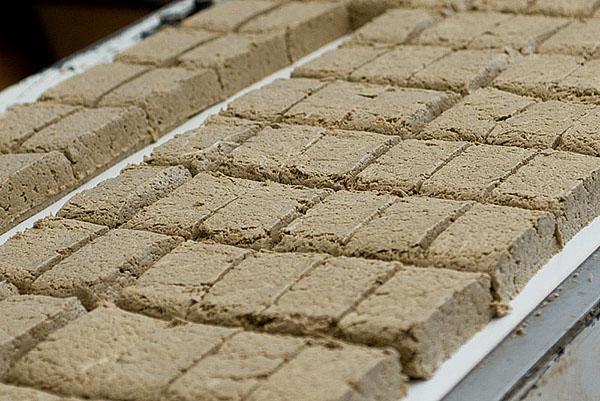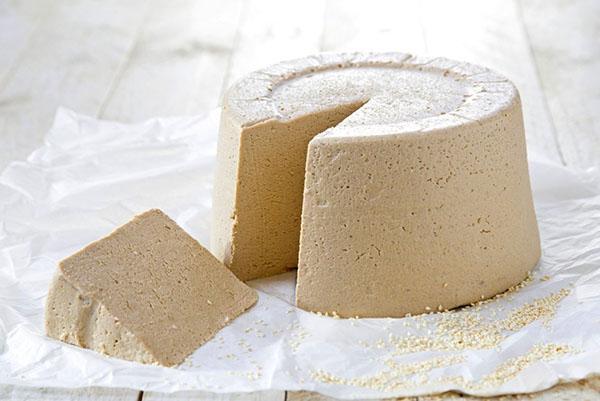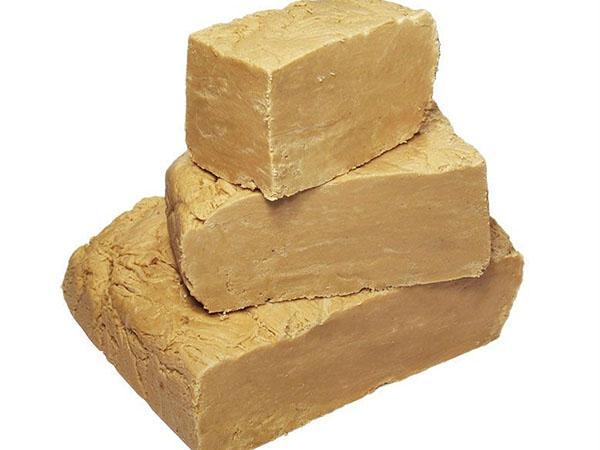Everything you need to know about peanut halva: product advantages and disadvantages, homemade recipes
 Peanut halva is one of the most famous oriental delicacies, although recently it has been produced and consumed in literally every country in the world. But is there any benefit from such a dessert and is it possible to prepare it at home?
Peanut halva is one of the most famous oriental delicacies, although recently it has been produced and consumed in literally every country in the world. But is there any benefit from such a dessert and is it possible to prepare it at home?
The health benefits and harms of eating halva

The benefits of halva are determined by its main ingredient, in this case peanuts. Additional ingredients (water and sugar) affect the body to a lesser extent. Eastern sweetness is rich in vitamins D, B2, B6, PP, which improve brain activity and strengthen the cardiovascular system. Also, peanut halva has an excellent amino acid composition. The nut-sugar paste contains 30% polyunsaturated fatty acids (oleic, linoleic, linolenic). Halva contains a lot of fiber, which will help to improve the functioning of the gastrointestinal tract. Due to the large amount of folic acid in the composition, peanut halva is recommended for women in early pregnancy.
For the production of sweets on an industrial scale, groundnut vegetable oil is used. The suspension is often prescribed by doctors to prevent cancer.
 Unfortunately, the delicious dessert cannot be consumed in large quantities. With extreme caution, oriental sweets should be treated:
Unfortunately, the delicious dessert cannot be consumed in large quantities. With extreme caution, oriental sweets should be treated:
- diabetics;
- allergy sufferers;
- people suffering from obesity.
Even if a person is not allergic to peanuts, one cannot mindlessly feast on halva. Sugar is the second main ingredient in dessert, which means that a lot of "empty" calories will enter the body. Peanut halva, which has a caloric value of 600 calories per 100 grams, is not suitable for those on a diet.
Without harm to the figure, you can eat only 10-15 grams of delicacies per day.
Features of peanut halva with the addition of sesame paste
Of course, it is very difficult to limit yourself to a twenty-gram piece of dessert. Therefore, it is better to use halva once a week, but in larger portions. The best option would be a treat made with proven products at home. But if this is not possible, then it is worth buying a natural store-bought dessert. Tahini-peanut halva contains almost 5 times more calcium than ordinary pasta. This means that this nutritious dessert can be given to children during the period of active growth. Sesame is also rich in copper, manganese, phosphorus and is a good source of iron and zinc. Do not worry that sesame seeds will get stuck between your teeth, because a special tahini paste is used to make halva in industrial conditions.
The process of making tahini-peanut halva begins with making a paste. First, sesame seeds are passed through a sieve to separate any foreign objects (debris). Then the seeds are washed in fresh water, fried, and then ground into a paste. To the finished tahini add ground peanuts, sugar syrup heated to a high temperature. At the final stage, the resulting mass is defended for 24 hours.
How to make halva at home?
 Peanut halva is prepared at home much faster than in production. But you need to be prepared for the fact that the taste, consistency and color of the dessert will differ significantly from the store product. For example, for cooking peanut butter you will need semolina, because it will not be possible to heat the sugar syrup as much as in an industrial kitchen. It is semolina that will act as a thickener.
Peanut halva is prepared at home much faster than in production. But you need to be prepared for the fact that the taste, consistency and color of the dessert will differ significantly from the store product. For example, for cooking peanut butter you will need semolina, because it will not be possible to heat the sugar syrup as much as in an industrial kitchen. It is semolina that will act as a thickener.
Ingredients:
- semolina (80 g);
- fried peanut (80 g);
- sugar (200 g);
- water (400 g);
- ghee (80 g).
Put a dry frying pan on the fire, add semolina and heat for 15-20 seconds. Add 40 grams of melted butter to the flour and fry the semolina until it takes on a golden brown hue.
Grind roasted peanuts in parallel in a blender. Fry the resulting mixture in the remaining ghee over medium heat.
Mix two pastes with sugar, stir vigorously. Put on low heat and cook until the sugar dissolves and all the water evaporates.
In the end, you should get a tight mass, which must be put in a mold and left in a cold place for a day.
The recipe for peanut halva with the addition of sesame seeds is similar to the previous one. But only the third will be added to only two of the original ingredients, namely, ground toasted sesame seeds. The dessert turns out to be less sweet, but more useful and aromatic.
No matter how tasty peanut halva is, you should not get too carried away with it. A large amount of sugar in the diet will negate all the benefits that nuts and sesame seeds could bring to the body.